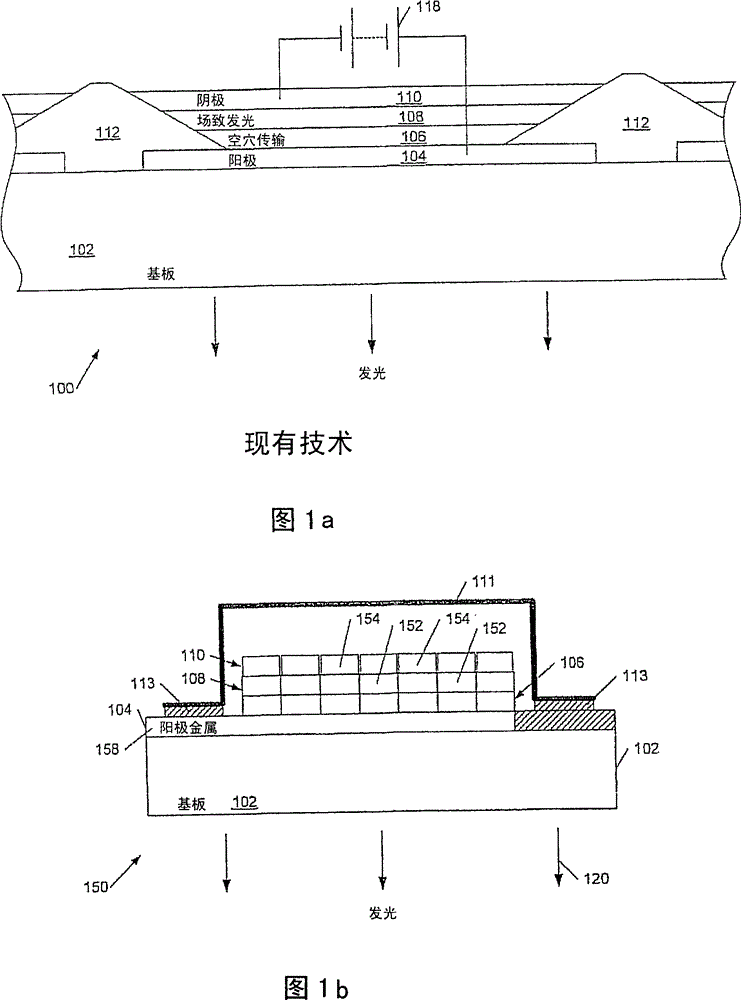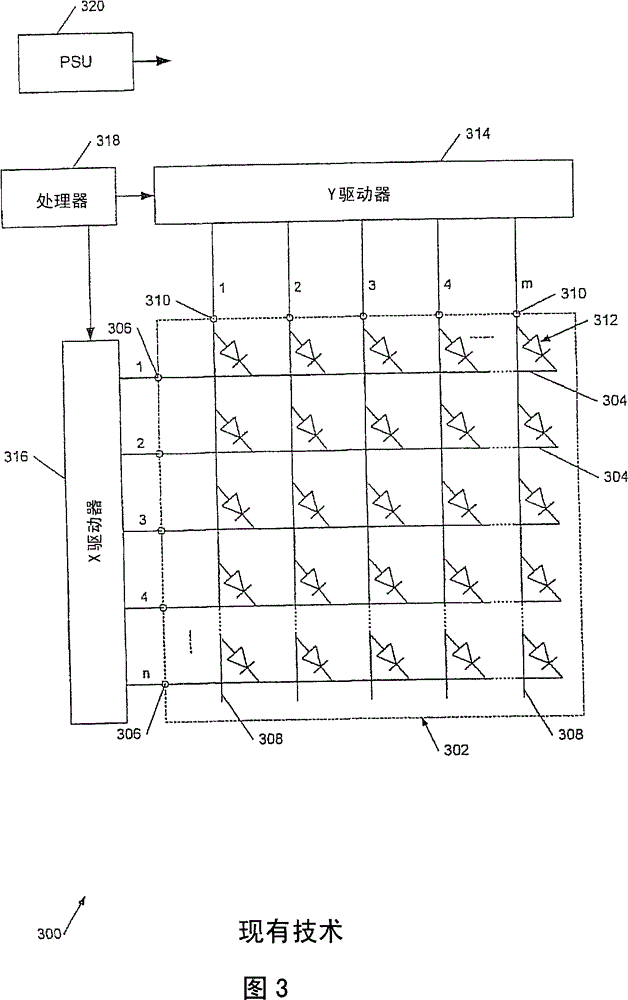Multi-line addressing method and device
An addressing and row electrode technology, applied in the field of multi-line addressing and equipment, can solve problems such as changes in the apparent brightness of pixels, and achieve the effects of reducing peak brightness, increasing color gamut, and increasing color gamut
- Summary
- Abstract
- Description
- Claims
- Application Information
AI Technical Summary
Problems solved by technology
Method used
Image
Examples
Embodiment Construction
[0061] Consider a pair of rows of a passive matrix OLED display comprising a first row A and a second row B. In a conventional passive matrix driving scheme, the rows can be driven as shown in Table 1 below, with each row either fully on (1.0) or fully off (0.0).
[0062] Table 1
[0063] A B open (1.0) Off (0.0) Off (0.0) open (1.0)
[0064] Consider the ratio A / (A+B); in the example in Table 1 above, this ratio is either 0 or 1, but if neither row has pixels in the same column fully on, this ratio can be lowered and still provide the desired pixel brightness. In this way, the peak drive level can be reduced, extending the lifetime of the pixel.
[0065] In the first line scan, the brightness can be:
[0066] first cycle
[0067] 0.0 0.361 0.650 0.954 0.0
[0068] 0.0 0.015 0.027 0.039 0.0
[0069] second cycle
[0070] 0.2 0.139 0.050 0.046 0.0
[0071] 0.7 0.485 0.173 0.161 0.0
[0072] visible:
[0073] 1. In a single scan period, the...
PUM
 Login to View More
Login to View More Abstract
Description
Claims
Application Information
 Login to View More
Login to View More - R&D
- Intellectual Property
- Life Sciences
- Materials
- Tech Scout
- Unparalleled Data Quality
- Higher Quality Content
- 60% Fewer Hallucinations
Browse by: Latest US Patents, China's latest patents, Technical Efficacy Thesaurus, Application Domain, Technology Topic, Popular Technical Reports.
© 2025 PatSnap. All rights reserved.Legal|Privacy policy|Modern Slavery Act Transparency Statement|Sitemap|About US| Contact US: help@patsnap.com



